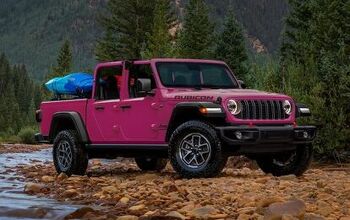Which Nation Tops the List for Vehicle Ownership Per Capita? The Answer Might Surprise You
In 2020, the United States reported a total of 289 million vehicles in operation, making up approximately 18 percent of the global count. This marked a significant increase, more than doubling the number since the 1960s. When exploring car ownership rates on a global scale, it's crucial to understand the variances in ownership, growth trends, and the rising influence of the global middle class on these dynamics.
Worldwide Rankings in Vehicle Ownership
The United States follows with a considerable 860 vehicles per 1,000 people, reflecting a robust vehicle market. Similarly for North America, Canada follows the States with 707 vehicles per 1,000 people. Europe presents a mixed scenario, with Poland and Italy notable for their high vehicle per capita rates. Poland, with 761 vehicles per 1,000 inhabitants, shows substantial vehicle ownership yet has a minimal adoption of electric vehicles. Italy stands with 756 vehicles per 1,000 people just slightly less than Poland. In stark contrast, Norway, with 635 vehicles per 1,000 people, has embraced electric vehicles more extensively, with a significant proportion of its vehicle market being electric.
In the top spot however is New Zealand with 869 vehicle per 1,000 people where the majority of their cars are imported from Japan.
The Surge in Global Vehicle Ownership
The expansion of the global middle class has propelled rapid growth in vehicle ownership in several countries. Vietnam, for instance, has experienced a dramatic increase in motorization, with an annual growth rate of 17 percent between 2015 and 2020. China and India also saw significant rises, highlighting a global trend towards increased vehicle ownership.
Electric Vehicles: The Future of Mobility
Electric vehicles (EVs) are gaining traction worldwide, with China leading the charge. The country houses more than half of the global EV fleet, a testament to its strategic position near essential raw materials for EV batteries and its robust battery production capabilities. Government policies have played a pivotal role in this sector, with China and Norway implementing strategies to overcome operational challenges and promote EV adoption. Norway, in particular, is on a path to eliminate sales of internal combustion engine vehicles by 2025, showcasing the country's commitment to sustainable mobility.
Concluding Thoughts
As vehicle ownership continues to evolve, the global landscape reveals a complex interplay between traditional vehicles and the emerging EV market. Countries like New Zealand and the U.S. demonstrate high vehicle per capita rates, while nations such as Vietnam and China show rapid growth, driven by economic expansion and policy initiatives. The shift towards electric vehicles, led by China and Norway, underscores a global trend towards more sustainable forms of transportation.
This article was co-written using AI and was then heavily edited and optimized by our editorial team.
More by TTAC Staff
Latest Car Reviews
Read moreLatest Product Reviews
Read moreRecent Comments
- Zipper69 "At least Lincoln finally learned to do a better job of not appearing to have raided the Ford parts bin"But they differentiate by being bland and unadventurous and lacking a clear brand image.
- Zipper69 "The worry is that vehicles could collect and share Americans' data with the Chinese government"Presumably, via your cellphone connection? Does the average Joe in the gig economy really have "data" that will change the balance of power?
- Zipper69 Honda seem to have a comprehensive range of sedans that sell well.
- Oberkanone How long do I have to stay in this job before I get a golden parachute?I'd lower the price of the V-Series models. Improve the quality of interiors across the entire line. I'd add a sedan larger then CT5. I'd require a financial review of Celestiq. If it's not a profit center it's gone. Styling updates in the vision of the XLR to existing models. 2+2 sports coupe woutd be added. Performance in the class of AMG GT and Porsche 911 at a price just under $100k. EV models would NOT be subsidized by ICE revenue.
- NJRide Let Cadillac be Cadillac, but in the context of 2024. As a new XT5 owner (the Emerald Green got me to buy an old design) I would have happy preferred a Lyriq hybrid. Some who really like the Lyriq's package but don't want an EV will buy another model. Most will go elsewhere. I love the V6 and good but easy to use infotainment. But I know my next car will probably be more electrified w more tech.I don't think anyone is confusing my car for a Blazer but i agree the XT6 is too derivative. Frankly the Enclave looks more prestigious. The Escalade still has got it, though I would love to see the ESV make a comeback. I still think GM missed the boat by not making a Colorado based mini-Blazer and Escalade. I don't get the 2 sedans. I feel a slightly larger and more distinctly Cadillac sedan would sell better. They also need to advertise beyond the Lyriq. I don't feel other luxury players are exactly hitting it out of the park right now so a strengthened Cadillac could regain share.


































Comments
Join the conversation